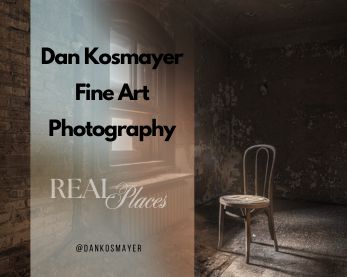A Step-by-Step Guide on How to Merge Photos in Lightroom for Stunning Results
If you’ve ever tried to capture a landscape or cityscape and felt like a single shot didn’t do it justice, merging photos in Lightroom is your solution. The HDR merge and panorama merge features are lifesavers when it comes to creating images that are dynamic, expansive, and packed with detail. Today, I will walk you through merging photos in Lightroom to help you achieve stunning results—whether you’re working on an HDR image, panorama, or HDR panorama.
Why Merge Photos in Lightroom?
Photo merging is the ultimate tool for creating high-contrast scenes or vast panoramas that push the limits of what a single photo can do. The magic of merging lies in combining multiple images or bracketed exposures into one final image that retains a more comprehensive dynamic range and greater detail in shadows and highlights. This is especially useful for architectural photography or large landscapes where a single frame can’t capture everything.
Lightroom’s photo merge feature makes it incredibly easy to merge photos, whether you’re working with HDR images or panoramas. The process is quick, but the impact on your photos is anything but small.
Preparing Your Photos for a Merge
Preparation is critical to successful photo merging. When I’m getting ready to merge photos, I always shoot in RAW file format. It gives you more flexibility during post-processing, and Lightroom works best with RAW files when performing merges. If you’re working with bracketed photos, ensure your exposures are consistent, as uneven exposure settings can cause problems during the Merge.
For an HDR panorama, using a tripod to keep your shots steady is a good idea. This ensures you get vertical lines straight, and the final result looks seamless. It’s also helpful to set your camera to Automatic Exposure Bracketing (AEB) to capture multiple exposure levels automatically. This creates more source material for your HDR merge and gives you more control over the final result.
Merging Photos to Create an HDR Image
So, you’ve got your photos and are ready to merge. Select the photos you want to combine, right-click, and choose HDR Merge. You’ll see options for Auto Align and Auto Settings—both are useful depending on your needs. Auto Align helps with slight movement between shots, while Auto Settings gives you a good starting point by applying basic tone adjustments. I usually leave Auto Settings off and make the adjustments manually later.
If you notice any unwanted ghosting from moving objects, like people or tree branches, adjust the Deghosting Amount slider to remove it. Once you’re happy, hit Merge, and Lightroom will create a merged HDR image.
Creating Panoramas with Panorama Merge
The process is very similar if you’re more into stitching together a series of shots to create a panorama. Select your photos, right-click, and choose Panorama Merge. Lightroom will give you options for the projection mode—spherical, Cylinderrical, or Perspective. If you’re stitching together a wide landscape, Spherical is usually the best choice. Cylindrical works well to maintain vertical elements in the scene, and Perspective is fantastic for architectural shots.
One handy feature is Boundary Warp, which helps to stretch the panorama to fill in the edges without distorting the essential parts of the image. You can also select Auto Crop to remove the transparent areas created by the Merge.
Advanced HDR Panorama Techniques
For the more advanced, combining HDR with panoramas is a great way to create expansive images with rich tonal detail. Select a set of bracketed exposures, right-click, and choose HDR Panorama Merge. Lightroom will process the HDR and panorama simultaneously, creating a stunning final image with a wide dynamic range and seamless blending.
Troubleshooting Common Issues
When merging photos in Lightroom, you might run into a few snags. If your panorama merge is misaligned, it’s usually due to slight shifts between shots. A tripod is crucial for aligning everything, especially for large scenes or architectural photography.
If you see ghosting in an HDR image, play with the Deghosting Amount to minimize the effect. If there’s an exposure mismatch, make sure your settings are consistent across all your bracketed shots.
Using Lightroom Presets for Merged Photos
After merging, I like to apply Lightroom presets to streamline my editing process. Whether dealing with HDR or panoramas, using presets designed for these photos can save you time and enhance the final product. For HDR images, look for presets that enhance contrast and dynamic range. Presets that bring out colors and textures can make a massive difference for panoramas.
Final Adjustments in Lightroom Classic
Once your photos are merged, jump into the Develop module for final tweaks. You can make tonal adjustments to enhance the dynamic range, apply local adjustments for more targeted changes, or simply play with the color balance until the image feels right. Once everything looks good, export your merged image in your desired format—a high-res file or a web-friendly JPEG.
Conclusion
By learning how to merge photos in Lightroom, you can create images that are far more detailed, expansive, and impactful than any single photo could ever be. Whether you’re creating HDR images, panoramas, or even HDR panoramas, Lightroom makes the process intuitive and accessible. So, give it a shot! Experiment with your merges, and soon, you’ll be turning out work that stands above the rest. ✔
